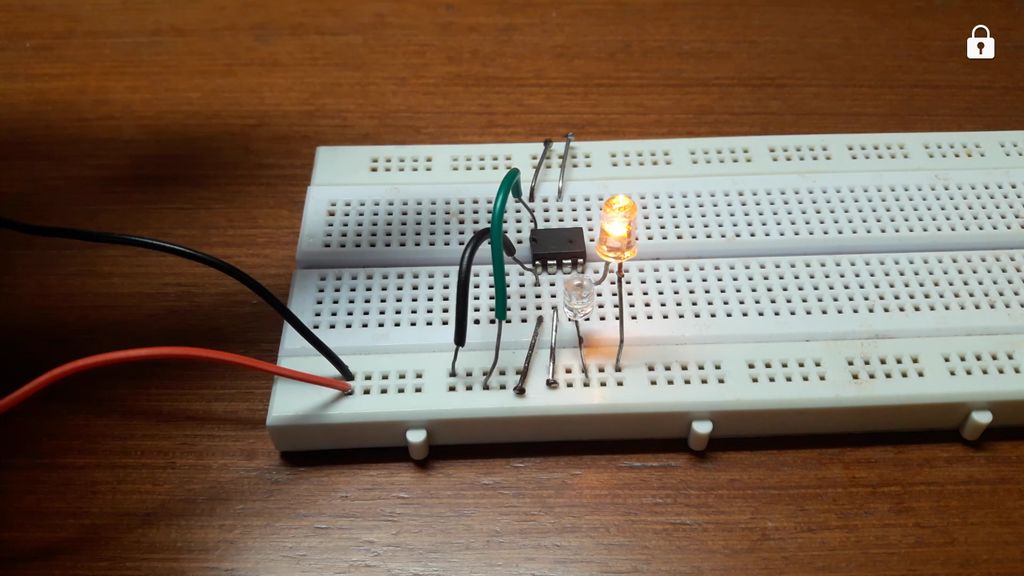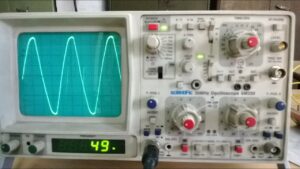An operational amplifier uses differential amplifiers and other circuits like constant current source, emitter follower, level shifter, etc. Opamp is the best quality amplifier circuit.
Definition of Operational Amplifier
Definition: An Opamp is defined as the high gain direct coupled amplifier, which consists of one or more differential amplifiers with other supporting circuits. The operational amplifier can perform mathematical operations like addition, subtraction, integration, differentiation and comparison.
Characteristics of Ideal Operational Amplifier
- Open loop gain is infinite i.e. the circuit without any feedback resistor*.
- Input resistance is infinite i.e. its input current is zero.
- Output resistance is zero i.e. its output current is infinite.
- Common mode rejection ratio (CMRR) is infinite.
- Propagation delay is zero i.e. it responds instantaneously i.e. without any delay.
- Infinite bandwidth i.e. opamp gives infinite (practically constant) gain for any input signal frequency from zero to infinity.
CMRR = ADM / ACM = ∞
Block Diagram of Operational Amplifier
The block diagram of Opamp is given below. It is divided into three main sections: input stage, intermediate stage and the output stage.

Input stage: This block includes first differential amplifier and the constant current source. The first differential amplifier is used as dual input balanced output type. The input-1 is inverting input terminal and input-2 is non-inverting input terminal of opamp.
Intermediate stage: This block includes second differential amplifier, emitter follower and the level shifter blocks. The second differential amplifier provides additional gain. The emitter follower to give high output current as it has low output resistance. The level shifter block removes unwanted DC shift in amplified signal.
Output stage: This block provides low output resistance and large peak-to-peak output signal amplification. It also adjusts its output resistance with the load resistance to provide maximum power across the load resistor RL.
Parameters of Operational Amplifier
The parameters mean the electrical characteristics of opamp. There are different types of parameters given below.
Output offset voltage: Due to mismatch or unbalanced circuit of differential amplifier there is small error voltage at the output even when inputs V1 = V2 = 0. This error voltage at the output is called output offset voltage.
Input offset voltage: To nullify the output offset voltage we have to apply some input voltage so that output becomes zero. This input voltage is called input offset voltage.
Input bias current: It is defined as average value of input currents going into input terminals.
IB = ( | IB+ | + | IB- | ) / 2
Input offset current: It is defined as difference between input currents going into input terminals.
IOS = | IB+ | ~ | IB- |
Open loop gain: It is defined as the gain of opamp without feedback. It is the ratio of output voltage to differential input voltage.
AOL = Vo / v
Where, v = V1 – V2 is the differential voltage
Closed Loop Gain: It is defined as the gain of opamp with feedback.
Bandwidth: It is the range of input frequencies ( FH – FL ) for which the gain of opamp remains constant. Ideally bandwidth is infinite and practically it is very high about 100MHz or more.
CMRR: The ratio of differential mode gain and common mode gain is called as common mode rejection ratio. It decides the amplification quality of an operational amplifier.
CMRR = ADM / ACM
Slew rate: It is defined as maximum rate of change of output voltage. When slew rate for an opamp is low it produces distortion at high frequencies. It is expressed in terms of volts/msec.
SR = dVo / dt






I’ve recently started a website, the info you provide on this site has helped me greatly. Thanks for all of your time & work. “Men must be taught as if you taught them not, And things unknown proposed as things forgot.” by Alexander Pope.